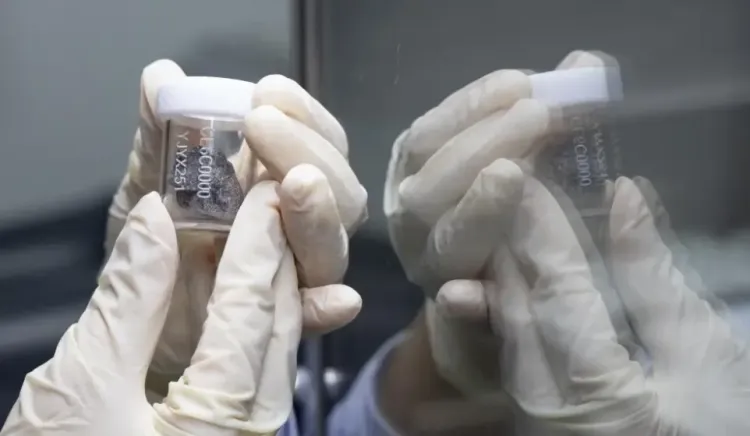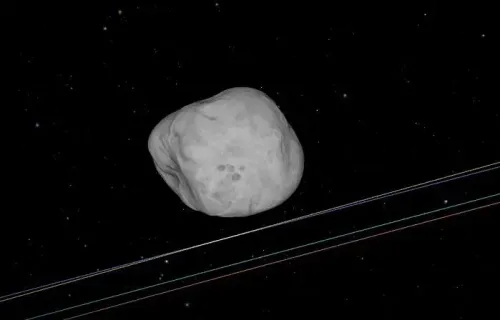Have scientists uncovered rare meteorite relics in Chang'e-6 lunar samples?

Synopsis
Key Takeaways
- Discovery of CI chondrites in lunar samples may change our understanding of mass transfer.
- The Moon acts as a pristine archive of ancient space activity.
- Research indicates more collisions with carbonaceous chondrites than previously thought.
- Findings offer new directions for lunar water resource studies.
- Advanced techniques were used to identify extraterrestrial meteoritic materials.
New Delhi, Oct 21 (NationPress) Researchers from China, examining lunar samples returned by the Chang'e-6 lunar mission, have uncovered rare meteorite relics that could significantly alter our comprehension of mass transfer throughout the Solar System.
This groundbreaking study, detailed in the latest edition of the journal Proceedings of the National Academy of Sciences, was spearheaded by a team from the Guangzhou Institute of Geochemistry (GIG), affiliated with the Chinese Academy of Sciences, as reported by the Xinhua news agency.
The CI chondrites, a type of meteorite abundant in water and organic compounds that predominantly hails from the outer Solar System, are exceptionally rare on Earth, comprising less than one percent of all meteorites collected.
Unlike Earth, the Moon lacks a significant atmosphere and plate tectonics, allowing it to maintain a pristine record of ancient asteroid impacts—functioning as a “natural archive.”
Employing advanced methods to analyze mineral composition and oxygen isotopes, the research team meticulously examined lunar soil and confirmed that the fragments originated from CI-like chondrites.
This research suggests that the Earth-Moon system may have encountered more collisions involving carbonaceous chondrites than previously thought.
“This finding not only shows that materials from the outer Solar System can migrate to the inner Solar System but also carries significant implications for understanding the origins of water on the lunar surface,” stated Lin Mang, a researcher at GIG.
“Furthermore, it paves the way for future inquiries into the distribution and evolution of lunar water resources,” he added.
Additionally, the study systematically established methodologies for identifying meteoritic materials within extraterrestrial samples.
In 2024, Chang'e-6 made history by successfully returning 1,935.3 grams of lunar far-side samples to Earth. These samples were collected from the South Pole-Aitken (SPA) Basin, recognized as the largest, deepest, and oldest basin on the Moon.









